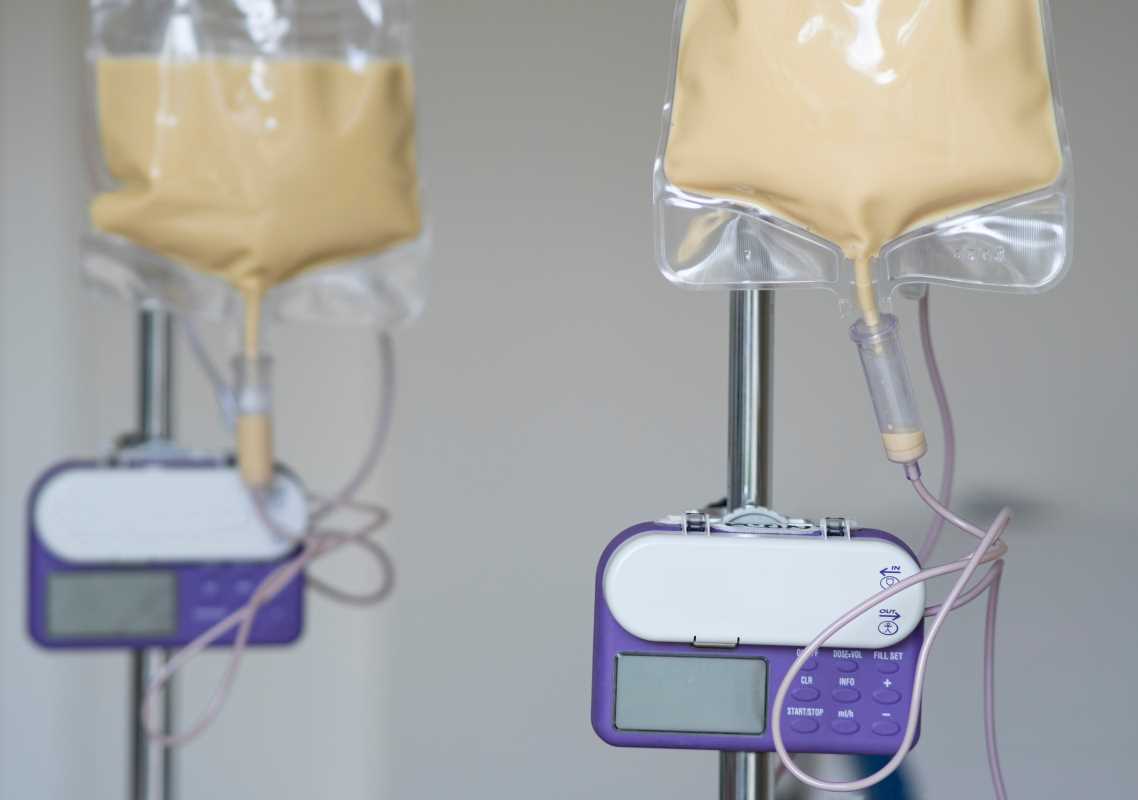Caring for a child with a feeding tube brings unique challenges, but it’s a routine that can become second nature with the right preparation and mindset. For parents, teachers, and caregivers, it’s not just about managing the technical side of tube feeding; it’s about fostering a sense of normalcy and inclusion for the child, whether they’re at home or in the classroom. With some thought and planning, you can ensure the child feels confident, supported, and included in everyday life.
This guide will provide practical advice on supporting a child with a feeding tube, addressing both functional management and emotional well-being, at home and at school.
Understanding Feeding Tubes
A feeding tube is a medical device used to provide nutrition to a child who cannot eat or drink enough on their own. This might be due to medical conditions, developmental delays, or other health issues. There are different types of feeding tubes, including:
- NG Tube (Nasogastric Tube): Runs from the nose to the stomach.
- G-Tube (Gastrostomy Tube): Directly inserted into the stomach through the abdomen.
- J-Tube (Jejunostomy Tube): Inserted into the small intestine.
Each type has specific care and management needs, but they all serve the same purpose of ensuring proper nutrition and hydration.
Understanding how your child’s feeding tube works is key to supporting them effectively. Once you have the basics, you can focus on creating a safe and inclusive environment both at home and at school.
Supporting a Child With a Feeding Tube at Home
Building a Routine
Consistency is essential when caring for a child with a feeding tube. Create a predictable routine around feeding times to help the child feel secure and ensure you don’t miss important feedings.
- Stick to a daily schedule based on their feeding plan, whether it involves continuous or bolus (scheduled) feeding.
- Keep all necessary supplies organized and easy to access, such as syringes, cleaning materials, and formula or feeding bags.
- Set reminders, if needed, to stay on track with feeding times and flushing the tube.
Keeping Feeding Tube Supplies Clean and Safe
Hygiene is important when managing a feeding tube to prevent infections or complications. Here are some best practices:
- Wash your hands thoroughly before handling the tube or any related equipment.
- Clean and sanitize all supplies regularly, following your healthcare team’s instructions.
- Check the tube site daily for redness, irritation, or leakage and contact a doctor if anything looks unusual.
Including the Child in Their Care
Depending on the child’s age and ability, involve them in their feeding tube routine. For example:
- Teach them how to set up their feeding pump or help clean their tube site.
- Explain the purpose of the tube in simple terms so they understand why it’s important.
- Celebrate small milestones, like learning a new step in the process, to build their confidence.
Supporting Emotional Wellness at Home
Children with feeding tubes may feel different or frustrated at times, so focusing on emotional support is just as important as physical care:
- Normalize the experience: Reassure the child that their feeding tube is simply one way to get the nutrition they need.
- Encourage expression: Give them space to share their feelings, whether through conversation, art, or other outlets.
- Foster inclusion: During family meals, allow them to sit at the table and be part of the social experience, even if they aren’t eating the same way.
Supporting a Child With a Feeding Tube at School
Communicating With Teachers and Staff
Open and clear communication with the school is essential to ensure your child’s needs are met. Start by coordinating with the school nurse, teachers, and administrators. Together, you can create a plan that supports the child while minimizing disruptions.
- Develop a 504 Plan or IEP if needed: These plans outline the accommodations and support the child requires, such as scheduled feeding times or access to a quiet space for tube feeding.
- Train key staff members: Ensure the school nurse and other relevant staff understand how to manage the feeding tube and respond to emergencies. Give them clear instructions and a written guide for reference.
- Discuss any extra needs: For example, will the child need a backup outfit in case of spills? How will the school handle feeding supplies?
Creating a Comfortable Feeding Environment
Feeding tubes can be discreetly managed in school settings with some planning. Here’s how to create a positive environment:
- Choose the right setting: Some children prefer privacy, while others are fine with feeding in the classroom. Ask what makes them most comfortable.
- Ensure flexibility: School staff should allow the child to take feeding breaks as needed without feeling rushed.
- Keep it low-pressure: The goal is to make tube feeding feel like a normal part of their day, not a big event.
Helping the Child Feel Included
Children with feeding tubes sometimes worry about being different from their peers. At school, inclusion plays a big role in their confidence and social well-being. Here’s how to foster it:
- Educate classmates: With the child’s permission, you can share simple information about the feeding tube to demystify it. Use age-appropriate language and encourage acceptance.
- Normalize their routine: If your child is comfortable, normalize how they take feeding breaks, so it blends into the day rather than standing out.
- Encourage participation: Make sure they’re included in all school activities, like gym class, field trips, or lunchroom conversations, as much as possible.
Handling Social Concerns
It’s natural for kids to feel self-conscious about their feeding tube, especially if classmates ask questions or make comments. Teach your child some simple responses they can use, like:
- “I use my tube to get my food. It helps me stay healthy.”
- “Everyone eats differently, and this is just how I eat.”
Encourage teachers to model respectful behavior and address any teasing or bullying immediately to maintain a positive school environment.
Emergency Preparedness
Both at school and at home, it’s important to have a plan for potential tube-related issues, such as blockages or dislodgement. Work with your healthcare provider to develop a step-by-step response guide that includes:
- What to do if the tube gets clogged.
- How to handle accidental removal.
- When to seek medical attention.
For schools, provide an emergency kit with extra supplies, such as clamps, sterile water, and backup feeding tube accessories. Make sure the school nurse and staff know where the kit is stored.
Honoring the Child’s Confidence and Independence
A key part of supporting a child with a feeding tube is empowering them to feel confident and capable. Whether they’re at home or at school:
- Encourage independence: Gradually involve them in managing their tube care as their abilities and maturity allow.
- Reinforce their strengths: Highlight their talents, skills, and personality rather than focusing solely on their medical needs.
- Celebrate achievements: Recognize milestones, both big and small, to keep them motivated and feeling proud.
Building a Strong Support Network
Finally, remember that you don’t need to manage everything on your own. Reach out to your child’s healthcare team, support groups for families with feeding tubes, or online forums to connect with others who understand your experience. Sharing tips, challenges, and successes can make the journey feel less isolating.
Supporting the Whole Child
Caring for a child with a feeding tube involves much more than managing meals; it’s about nurturing their physical health, emotional well-being, and sense of belonging. With thoughtful planning, clear communication, and plenty of support, you can help the child thrive both at home and at school. The key is to focus not just on their medical needs, but also on their confidence, independence, and happiness. Together, we can create an environment where every child, regardless of how they eat, feels valued and included.
 (Image via
(Image via





